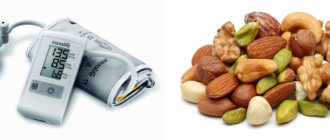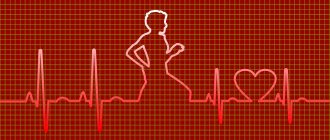A pressure of 130 over 60 is not normal; in most clinical cases, it signals a dysregulation of the cardiovascular system. When measuring blood pressure, people are guided by systolic pressure values, however, for an accurate assessment it is necessary to take into account the data of the lower indicator. To get a complete picture, experts recommend calculating the difference between the upper and lower values, which in this case exceeds the norm. What reasons contribute to deviations from normal tonometer values and how to diagnose them in a timely manner?
What do 130/60 indicators indicate?
Having received tonometry data within 130 to 60, the patient has a question, what does this level of blood pressure (blood pressure) mean? Normal blood pressure values are in the range: systolic (110–135) and diastolic (70–100). The range of values is wide, since their value is individual for each person and depends on many associated factors: age, gender, degree of physical fitness, state of the nervous system. Therefore, the development of the disease is signaled by pathological symptoms that disrupt a person’s general well-being.
As a rule, the diagnosis of arterial hypertension is made when the blood pressure level is 140/110 mm Hg. Art. However, there are borderline cases when the upper pressure is 130, while the lower pressure is reduced to 60. For some patients, these values occur without visible symptoms, which only increases the risk of complications.
An essential criterion in assessing the functional capacity of the myocardium is the determination of pulse pressure, which is calculated by identifying the difference between the systolic and diastolic indicators. Normal values range from 30 to 60 mmHg. Art., while at rest it should not exceed 40 mm Hg. Art. When the pressure is diagnosed as 130 over 60, the pulse difference is 70 mmHg. Art. A significant increase in pulse value increases the risk of developing cardiac pathologies, since the heart muscle works more intensely, which leads to its rapid depletion.
Important! Increased upper pressure with a decrease in lower pressure means an increase in the pulse rate, which is a sign of disturbances in the functioning of the myocardium, a disorder of vascular tone and the development of diseases of the endocrine system.
Causes of high upper and low low blood pressure
Why does dissonance occur between the upper and lower blood pressure values? The state of the cardiac and vascular system is assessed by the level of systolic pressure. Its increase occurs with a heart rhythm disorder, congenital or acquired heart defects, as well as with excessive activity of adrenal hormones.
Diastolic pressure decreases as a result of loss of elasticity and tone of large arteries and the formation of cholesterol deposits on the walls of blood vessels.
Blood pressure 120 over 55 - what does this mean?
A simultaneous combination of increased upper and decreased lower pressure is observed in the presence of the following conditions:
- Aortic valve defects due to atherosclerotic disease.
- Excessive production of thyroid hormones.
- Old age, at which there is a decrease in arterial tone and cardiac dysfunction.
A large difference between the indicators can be observed with kidney dysfunction, which leads to excess production of renin, which affects the diameter of the vascular lumen. Excessive concentration of the hormone in the blood causes vasoconstriction, as a result of which the pressure may increase in systole and decrease in diastole. In this condition, the filtration capacity of the kidneys is impaired and the amount of urine produced decreases. A pronounced decrease in diastole, when the pressure is 130 to 50, can even lead to complete dysfunction of the paired organs.
The main causes of the pathological condition are associated with disruption of the cardiac and vascular system, namely:
- Suffered a stroke.
- Post-infarction state.
- Heart failure.
- Decreased elasticity of peripheral arteries.
- Stretching of the aortic walls and its branches.
Why is frequent blood pressure fluctuation dangerous?
Frequent surges in blood pressure are dangerous because they increase the risk of stroke, since the walls of blood vessels begin to actively vibrate, and they are the weak link, and with sudden compression and relaxation they are injured, do not have time to normalize and often rupture.
Rupture of the walls of blood vessels due to frequent fluctuations in pressure
If you develop hypotension or hypertension, it will be difficult to control your blood pressure over the years if you don’t take action now. Delay is fraught with the appearance of coronary disease, tachycardia, heart and kidney failure, impaired fat metabolism, type 2 diabetes, stroke or heart attack.
You should consult a doctor if symptoms like yours appear, with pulsation in the temples, drowsiness and apathy, causeless weakness and fatigue after a night's sleep, the appearance of “spots” before the eyes, headaches due to the weather and after stress.
Possible complications of pathology
If the pressure of 130 to 60 is unstable, then no pronounced pathological changes occur. However, with long-term and constant detection of values, it is necessary to consult a therapist or cardiologist. The most common complications of a high pulse difference are:
- Increased risk of developing emergency cardiac pathologies and cerebrovascular accidents.
- Intensive decrease in the tone and elasticity of the arteries.
- Disorders of kidney and liver function.
- Dysregulation of the nervous system.
Home treatment
As for home recommendations on what to do with a blood pressure of 130/50, you need to remember the following:
- If a person suddenly becomes ill, but this is the first time he has experienced such a condition, then the first thing he needs to do is put him to bed and let him rest. In this case, it is necessary to control its pressure. If the situation does not improve, then it is better to call an ambulance.
- If this happens to a person periodically, then a doctor’s consultation is necessary to determine the exact reasons.
- If the underlying disease causing the decrease in blood pressure is known, then it is enough to follow the doctor’s recommendations and give the person the necessary medications.
In any case, home treatment should be based on an accurate diagnosis and consultation with a specialist.
Without this, it can be dangerous to engage in treatment and take various drugs according to traditional recipes. Such self-medication can cause serious harm to the body and even have fatal consequences for a person.
Signs of development of the condition
Regardless of the reason that provoked the high pulse difference, the main symptoms characteristic of the pathology are identified:
- Headache.
- Increased fatigue.
- Sleep disorder.
- Pain in the heart area.
- Interruptions in the functioning of the heart.
- Excessive irritability.
- Feeling of increasing anxiety.
Dizziness occurs due to hypoxia, when organs and tissues receive insufficient nutrients and oxygen
Symptoms of hyperthyroidism
In most cases, dissonance between blood pressure indicators is detected in hyperthyroidism.
Impaired production of thyroid hormones can be determined by the following signs:
- Rapid pulse.
- Heavy sweating.
- Nausea, pain in the abdominal cavity.
- Excessive feeling of hunger;
- Irritability, anxiety.
- Disruptions in the menstrual cycle.
- Decreased libido in men.
Symptoms of heart pathologies
Heart rhythm disturbances and valve defects are accompanied by typical symptoms of heart failure:
- Pain in the chest area.
- Increasing shortness of breath.
- Increased heart rate.
- Irrhythmic pulse.
The pain syndrome is stabbing in nature, which intensifies when inhaling or after eating.
Manifestations of atherosclerosis
The atherosclerotic process is the main cause of loss of vascular elasticity, resulting in impaired blood circulation. A high pulse difference against the background of atherosclerosis can be provoked by a disorder of the thyroid gland, diabetes mellitus.
With atherosclerotic vascular damage from cholesterol plaques in patients, pressure values can vary throughout the day and reach parameters of 135 to 65 or 128/60 mm Hg. Art. The pathology is characterized by the following manifestations:
- Weakening of brain functions.
- Mental and emotional disorders.
- Sleep disorder.
- Noise in ears.
- Dizziness.
- Periodic numbness of the limbs.
Important! As a rule, dissonance between indicators occurs against the background of diseases associated with disturbances of heart rhythm and arterial tone in people over 35 years of age. However, this disorder can be diagnosed in a child, as well as in a teenager, during the period of hormonal changes in the body.
Changes in pulse pressure during pregnancy
During pregnancy, there is an increase in circulating blood, so a slight increase in tonometer values is normal for a woman. However, a decrease in diastolic indicator is not normal, since it indicates the development of abnormalities.
This condition provokes hypoxia, when oxygen deficiency affects not only the fetus’s body, but also the woman herself. The disorder is manifested by a decrease in the functional activity of the brain, myocardium, and kidneys. In the later stages, gestosis may develop, in which blood pressure rises sharply.
In the early stages, a high difference between the values leads to severe toxicosis, which affects the development of the fetus. Women may experience weakness in labor, affecting the intensity of uterine contractions.
Features of indicators 130/60 in an elderly person
In people over 60 years of age, arterial hypertension is predominantly detected, in which there is an increase in systole and diastole. Therefore, the upper value of the tonometer is 130 mm Hg. Art. is the norm, but the lower one is 60 mm Hg. Art. – refers to a pathological sign. In this condition, the use of antihypertensive drugs is contraindicated, since a parallel decrease in both parameters occurs, as a result of which the course of the pathology is aggravated. The use of hypertensive drugs is also not recommended, since along with an increase in diastole, systole numbers increase.
In the elderly, there is an imbalance in the daily regulation of blood pressure. Changes in parameters are observed at night and in the morning. During this period, the patient experiences weakness, dizziness, and pain in the chest area.
When determining high pulse pressure in old age, you should consult a cardiologist, since in this mode the myocardium experiences excessive stress, which can lead to a heart attack.
How does a person feel?
Having such pressure, a person may experience certain unpleasant sensations:
- extremities are usually very cold compared to the rest of the body;
- a feeling of nausea or vomiting may occur;
- the person may experience panic attacks or anxiety;
- general weakness and cold sweat;
- dizziness occurs, and the person may also experience severe headaches;
- periodic pain in the chest, a feeling of compression of the heart;
- a person is also subject to mood swings and experiences a feeling of depression.
In this case, it is necessary to take the pulse, which can be a quick way to diagnose the condition. If, with reduced pressure, the pulse quickens and exceeds 80 beats per minute, then the cause of the decrease in pressure may be a malfunction of the endocrine system.
If the cause of increased heart rate was heavy physical work, then this condition cannot be clearly attributed to pathological causes. Sometimes it is enough to take a short break for the condition to improve. The best way to do this is to lie down.











